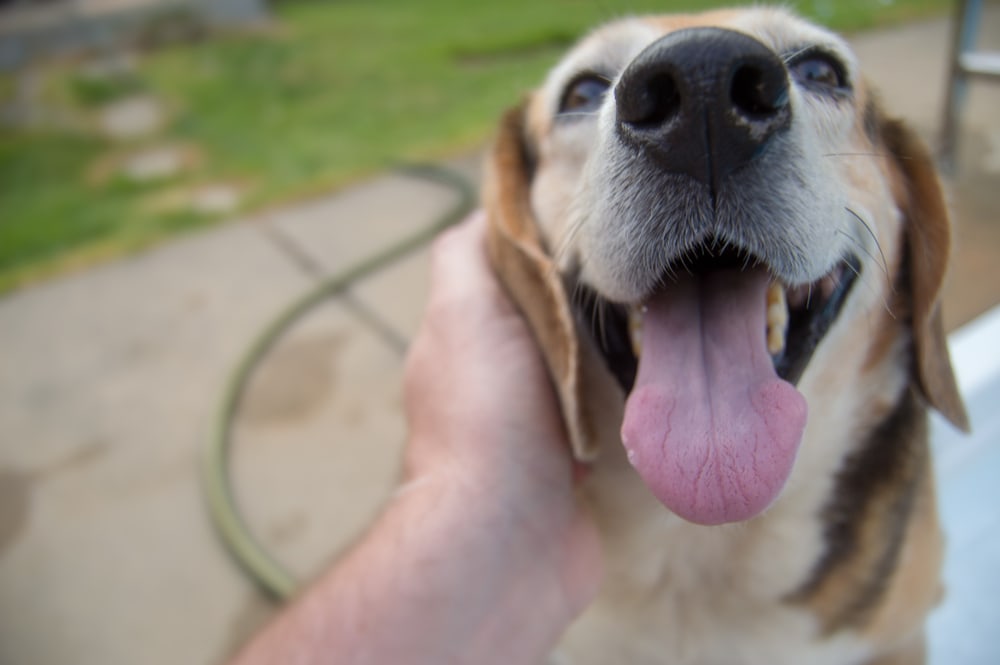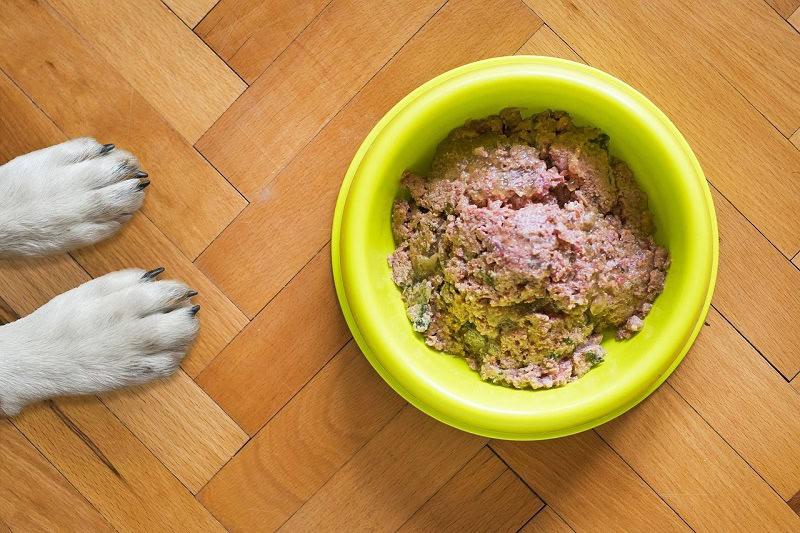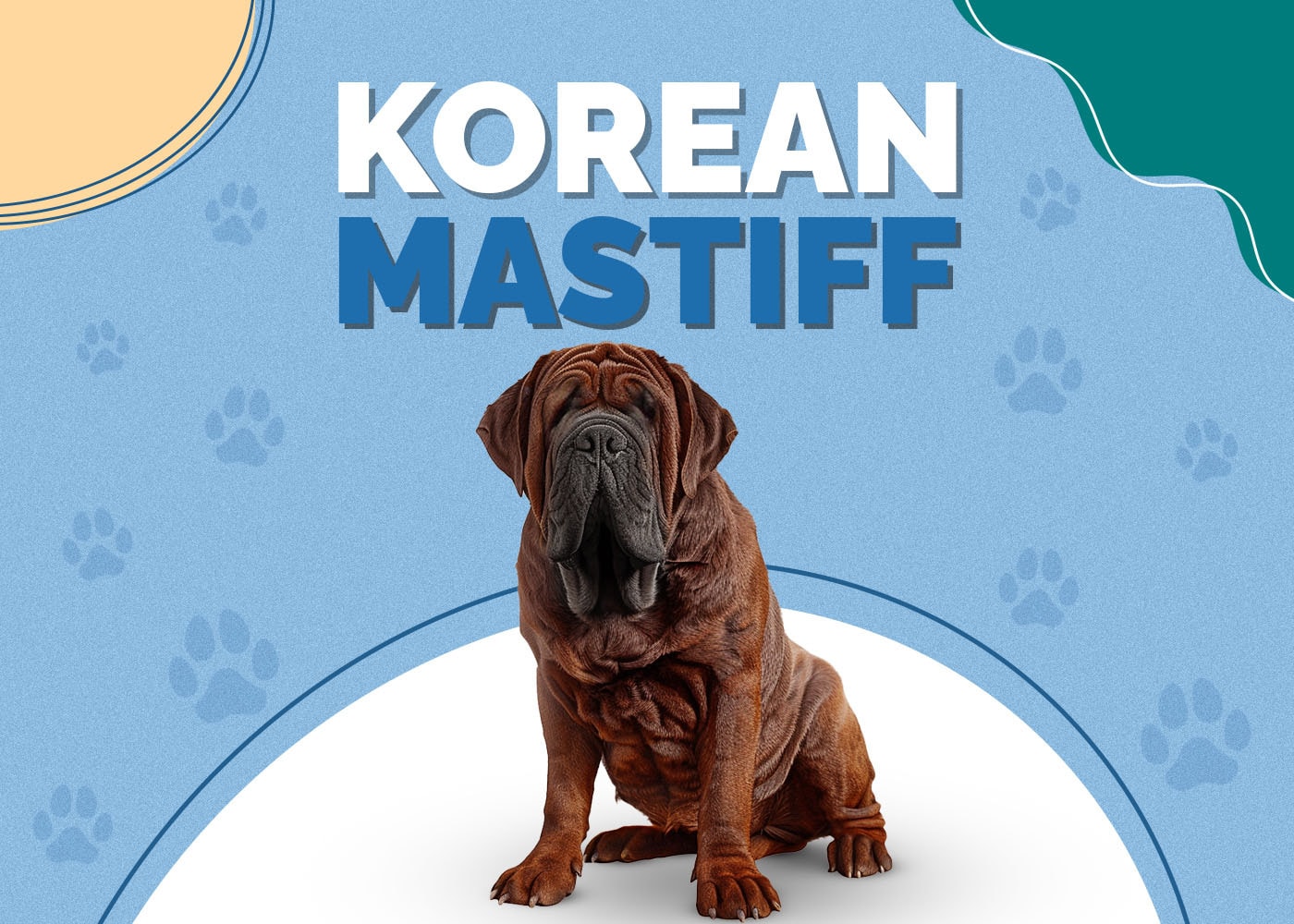Grand Basset Griffon Vendéen: Breed Info, Pics, Traits, Facts

Updated on
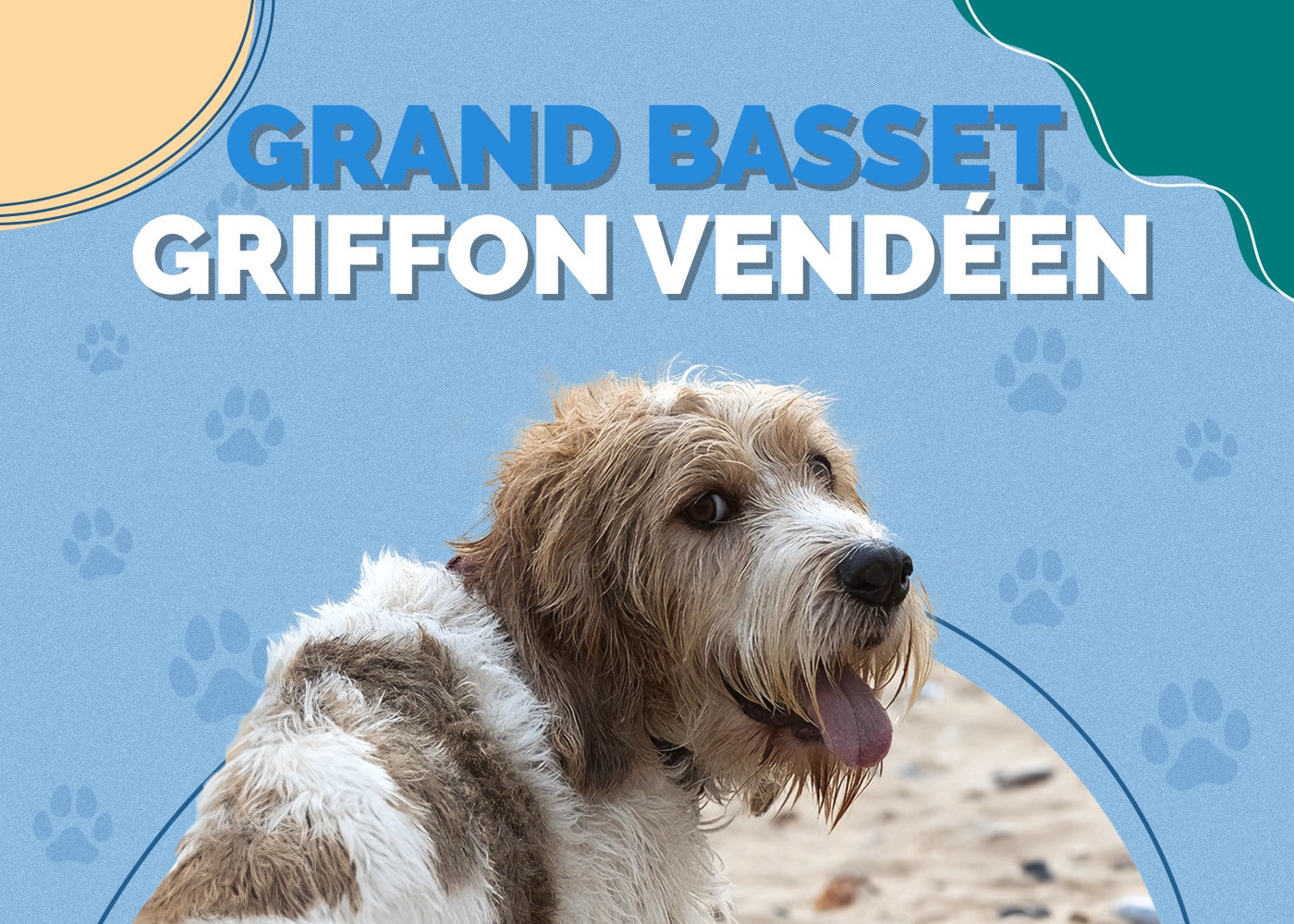
| Height: | 16 – 18 inches |
| Weight: | 40 – 45 pounds |
| Lifespan: | 12 – 14 years |
| Colors: | Black and tan, tricolor, black and white, orange and white, fawn and white |
| Suitable for: | Families, active singles and couples, experienced owners |
| Temperament: | Active, independent, energetic, friendly, alert, vocal, intelligent, courageous |
The Grand Basset Griffon Vendéen, or the GBGV for short, is a sweet, outgoing, and mild-mannered pooch that originated in France. They were developed as hunting dogs, employed to hunt small game, like rabbits, hares, and fowl, as well as even larger game, like wolves and deer. They still have this hunting instinct in their genes, so they are highly active animals that need a great deal of exercise and may not get along well with the family cat!
Nowadays, they are popular family animals. The breed is a newcomer to the United States and was first imported in the early 1990s. The first litter was born in the U.S in 1994. Consequently, they are a rare breed and there are limited numbers in the U.S.
The Grand Basset Griffon Vendéen is a medium-sized breed with a rough, weather-resistant coat, a long body with short legs, and a characteristic mustache and long eyebrows. If this breed sounds like the dog for you, read on to find out more!
Grand Basset Griffon Vendéen Puppies
Before bringing home your Grand Basset Griffon Vendéen or any dog, for that matter, it is vital to prepare. You’ll need to carefully consider the GBGV’s unique characteristics and make sure that you have everything you’ll need to accommodate them.
Firstly, while the GBGV is not a large dog, they are not small either, and they are active animals that need a ton of space to run around in. A home with a large backyard is ideal, or there at least should be a park close by where they can go for regular off-leash walks. Although these dogs can live in apartments, it is not ideal, and it’ll be a challenge to make sure they are getting the required exercise.
All dogs, no matter the breed, are a big responsibility, and they’ll need a great deal of training early on. The GBGV is an active, energetic dog that requires adequate socialization and training from an early age, and you’ll need to take at least 2-3 hours per day out of your schedule to meet these needs.
3 Little-Known Facts About the Grand Basset Griffon Vendéen
1. It’s all in the name!
The Grand Basset Griffon Vendéen originated in France, and as such, has a French name. “Grand” means large in French, and this describes the larger of the Basset Griffon Vendeen breeds, the other being “Petite,” meaning small. “Basset” means low, describing their low-to-the-ground, short legs, and “Griffon” describes any type of wire-haired dog. Lastly, “Vendéen” comes from Vendée, the region of France where the breed was developed. Essentially, these dogs are “Large, low, wire-haired dogs from Vendéen”!
2. The GBGV and the PBGV were once the same breed
The “Petit” Basset Griffon Vendéen is the smaller version of “Grand” Basset Griffon Vendéen, but the two did not become distinct, different breeds until the 1970s. While the GBGV was used to hunt larger animals like deer and wolves, the PBGV was reserved for hunting small game like rabbits and fowl. The breeds were interbred and then selected for size, but there is now more separating these animals than just their size: The Grand Basset Griffon Vendéen has a proportionately longer muzzle, tail, and ears.
3. They were once considered “the poor man’s hunting dog”
These dogs were once known in France as the “poor man’s hunting dog.” Hunters who could not afford horses could not keep up with the large hunting hounds that were traditionally used. This is why these dogs were bred, along with other Basset breeds, with short legs. They were scent hounds that hunted in packs, using their powerful noses to track game, similar to Beagles and other Hounds.
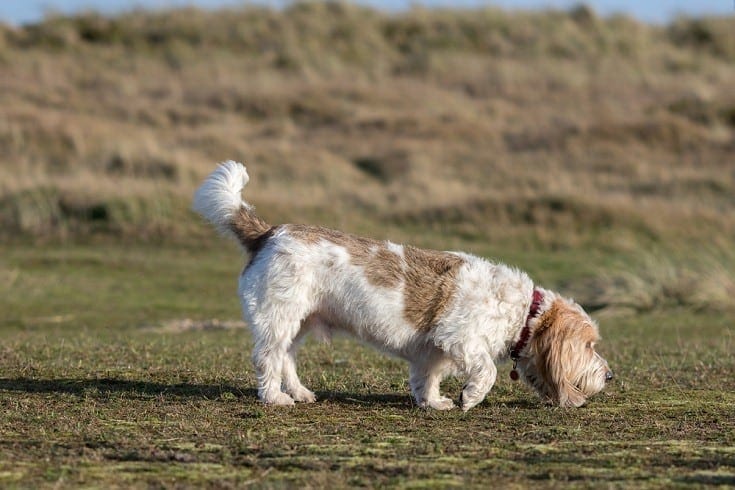
Temperament & Intelligence of the Grand Basset Griffon Vendéen 🧠
The Grand Basset Griffon Vendéen is an energetic, active, and intelligent dog that was bred for hunting. This hunting history means they need a ton of regular exercise; without which, they can get up to mischief. Although they are more commonly kept as companion animals nowadays, they still have strong noses and hunting instincts and an independent nature, and those instincts need to be channeled into constructive activity.
Of course, this long history of working closely with humans makes them highly loyal animals that are usually a breeze to train, especially when that loyalty is combined with their high intelligence. That said, they are known for being somewhat stubborn and independent at times, and they require a strong leader in order to obey commands. These dogs are always eager to please, however, and in general, they have a happy-go-lucky attitude toward life that is contagious. These sweet-faced, loyal, fun-loving, and even-tempered dogs are a joy to own.
Are Grand Basset Griffon Vendéens Good for Families? 🏡
The Grand Basset Griffon Vendéen is a great family dog. They are sweet-natured animals that love to be around their human owners and are rarely, if ever, aggressive. Their small size and high energy make them great playmates for children, and they’ll be happy to chase a ball for hours on end. Their high energy may be a bit much for younger kids, though, as they are easily excited and get boisterous during play sessions. They are exceptionally loyal, however, and you’ll have a fun playmate in the family home, as well as a loyal watchdog!
Do Grand Basset Griffon Vendéens Get Along With Other Pets? 🐶 😽
The Grand Basset Griffon Vendéen has a rich hunting history, and of course, this comes with a powerful prey drive. These animals were developed for hunting small game, a title that your family cat definitely qualifies as! They are friendly and intelligent animals, though, and with early socialization and good training, they can get along great with cats. Other dogs are no issue, as the GBGV is friendly and willing to make friends with all other dogs they meet — they have a long history of being part of a hardworking pack.
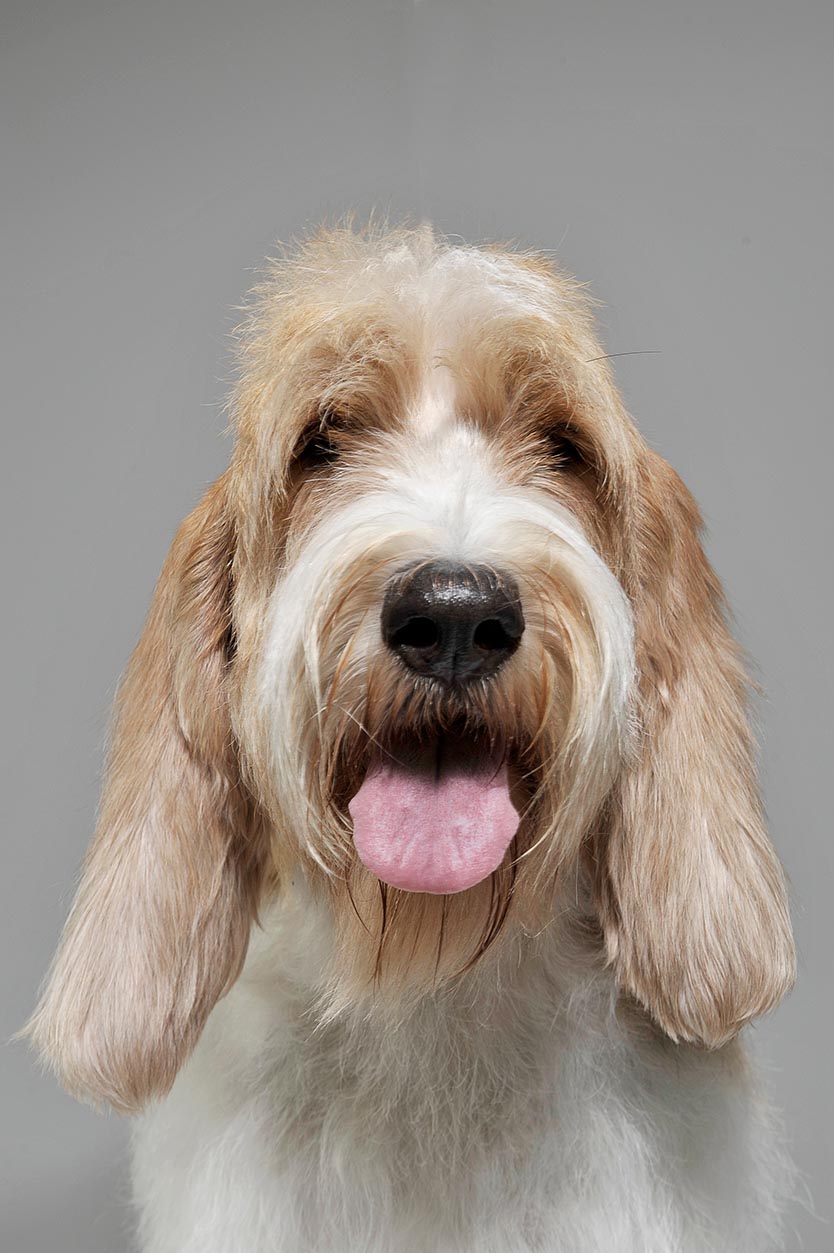
 Things to Know When Owning a Grand Basset Griffon Vendéen
Things to Know When Owning a Grand Basset Griffon Vendéen
Food & Diet Requirements 🦴
Since the Grand Basset Griffon Vendéen is a medium-sized breed, you’d expect them to have an average appetite, but due to their high energy and active nature, these pooches can pack away a surprising amount of food! With dogs that expend such high amounts of energy, it’s vital to make sure they are getting a balanced diet packed with all the nutrition that they require. A specially formulated adult food that is made for high-energy breeds is ideal, as it contains the extra protein that they need for energy.
Commercial dry kibble is a great choice for the GBGV, provided that it is of high quality, has high amounts of animal-based protein, and is free from filler ingredients, like corn, soy, and wheat. Your GBGV could benefit from an added energy boost occasionally, however, so organ meats and lean meats are great additions. They’ll also love the variety.
While these dogs are high energy, we advise against free-feeding them. If they do not get the required exercise and are overfed, they are prone to becoming obese. Once they’ve had their fill, make sure to take the leftovers away (if there are any!). Make sure they have access to fresh, clean water at all times.
Exercise 🐕
Being such a high-energy dog with a long history of hunting, the Grand Basset Griffon Vendéen needs more daily exercise than many other breeds their size. This is what makes this breed such a large responsibility, as ideally, they need at least 2 hours a day of intensive exercise, but the more, the better. An hour or two of jogging or running with a leash is great and enough for them to release pent-up energy, but time off-leash is also vital to their physical and mental health, especially if they do not have access to a large backyard.
These dogs have powerful noses, so having off-leash time to run around and follow scents, explore, and exercise their natural instincts will be of great benefit to them. Without adequate exercise, you may find your GBGV slipping into unwanted behaviors, including barking, chewing, chasing your family cat, and possibly even being aggressive. Dogs with such a rich history of running for miles alongside their pack and human owners need this experience as closely matched as possible, and if you do not have the time to dedicate at least 2 hours a day to exercise, the GBGV may not be the breed for you.
Training 🦮
While they are known for occasional stubbornness, the Grand Basset Griffon Vendéen is generally an easy dog to train for an experienced dog owner. With their history of working closely with humans and in close-knit packs, these dogs are eager to please and intrinsically understand the value of obeying commands. That said, they need a great deal of guidance and a strict, regular training schedule — consistency is key.
Socialization is an often-overlooked aspect of good dog training, but it is an essential component of your dog being able to follow commands. This is especially true with breeds like the GBGV, which have powerful noses and powerful instincts. These traits can easily send them chasing after an intoxicating scent. Your dog needs to learn how to resist these temptations, especially off-leash, and this will take time, patience, and dedication for them to master. Firm and consistent training is essential, and due to the breed’s eagerness to please, positive reinforcement methods are generally the most successful. Just be sure to keep training sessions fun, entertaining, and short — sessions of 20-30 minutes are best to prevent boredom and distraction.
Grooming ✂️
The coat of your Grand Basset Griffon Vendéen is one of their most defining and recognizable characteristics. Their unique shaggy, wiry coat comes in a variety of patterns and colors and has a thick undercoat topped with a somewhat harsh topcoat that is designed to be out in harsh conditions. This means that their coat is highly knot-resistant and doesn’t need much brushing, but it will still need occasional grooming to remove dead hair and spread natural oils.
Bathing is not necessary unless they get really muddy, and even then, warm water is fine. Shampoos and soaps can strip your dog’s coat of its natural oils. Other than that, occasional nail clipping — once every couple of months — and regular teeth brushing are all that’s needed.
- Also see: Best Dog Wipes – Reviews & Top Picks
Health and Conditions ❤️
The Grand Basset Griffon Vendéen is a healthy breed generally and suffers from few serious hereditary conditions. They have long lifespans, a testament to their overall health. That said, like all dogs, there are a few health issues to be aware of. The most common ones are inherited eye disorders like retinal dysplasia, and hip dysplasia is fairly common too.
- Obesity
- Bloat
- Cataracts
- Retinal dysplasia
- Epilepsy
- Hip and elbow dysplasia
- Patellar luxation
Male vs. Female
The last decision to make if you have decided to bring home a Grand Basset Griffon Vendéen is whether to get a male or female. Remember that your dog’s temperament, character, and behavior are far more influenced by their environment and upbringing than their sex, and the way that you socialize and train them will be a much bigger determination of their character.
In any case, there is little difference between male and female GBGVs, although males may be slightly bigger. Females are generally more aloof and independent, whereas males are needier and more attention-seeking. Females are easier to train, however, by virtue of the fact that they mature quicker than males.
Summing Up
The Grand Basset Griffon Vendéen is a dog suitable for an active owner. With their long history of hunting, running, and scenting, they are energetic and active animals that need a ton of exercise to thrive. They are sweet-natured pooches that are eager to please, making them great family dogs, and their small size makes them great playmates for kids. While they are slightly more of a challenge to train, especially for novice dog owners, they respond well to training and quickly pick up commands. They are healthy animals that suffer from few hereditary diseases, as evidenced by their long lifespans, and this, combined with their low-maintenance wiry coats, makes them easy to care for.
Grand Basset Griffon Vendéens are high-energy, active animals that require a great deal of dedication. If you are an active owner who loves the outdoors and has a fair-sized backyard, this dog may be the ideal choice!
Featured Image Credit: Ian Dyball, Shutterstock


 Things to Know When Owning a Grand Basset Griffon Vendéen
Things to Know When Owning a Grand Basset Griffon Vendéen
